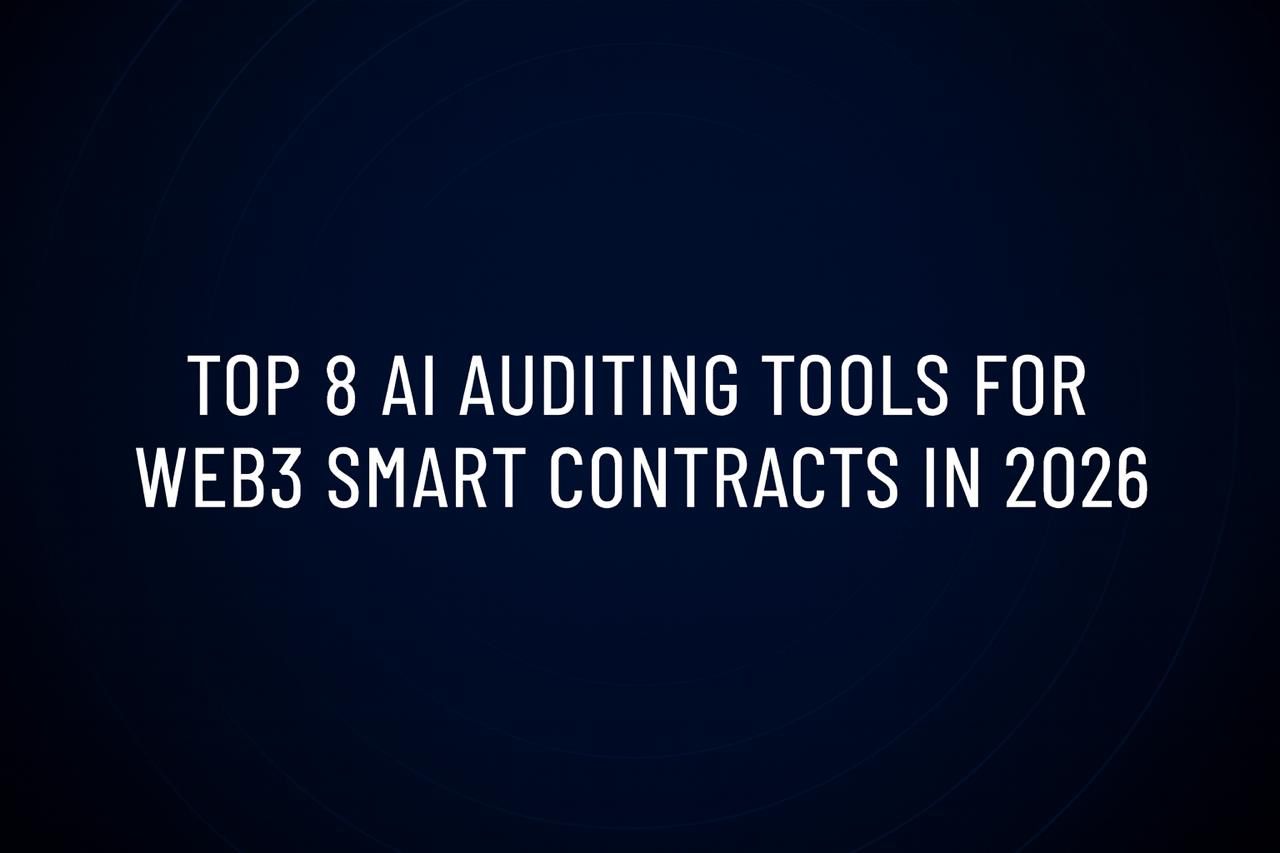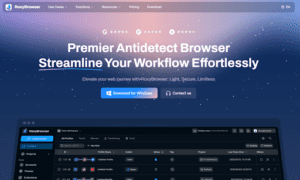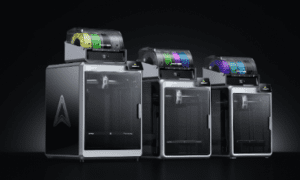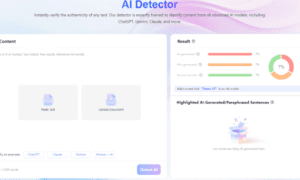A new category is emerging in Web3 security: the AI auditor. What began as an experiment, training machine-learning models to detect smart-contract vulnerabilities, has evolved into a full-scale race among top security firms. The goal isn’t to replace human auditors; it’s to scale their expertise and accelerate how security reviews happen across the ecosystem.
To understand where the field stands, we researched, compared, and ranked the leading AI auditing tools for Web3 smart contracts. This ranking was based on three factors: public technical documentation, verifiable real-world usage, and the degree of automation demonstrated. Each project was reviewed through its own website, published research, and user reports as of October 2025.
Quick Answer – The top 3 AI auditing tools for Web3 smart contracts in 2026 are:
- Sherlock AI – Best overall, trained on thousands of real audit findings
- Olympix – Best for DevSecOps and continuous integration
- Almanax – Best for complex logical vulnerabilities with open datasets
These tools use machine learning to detect smart contract vulnerabilities during development, reducing audit time and catching security issues before deployment.
1) Sherlock
Sherlock AI is an automated auditing system designed to identify vulnerabilities during development using data drawn from the company’s own audits, contests, and exploit reports. The model was released in September 2025 and developed by experienced auditors Bernhard Mueller and 0x52, both recognized for their technical depth in smart contract analysis and automation.
It combines rule-based scanning with supervised learning on real vulnerability data to generate ranked findings that approximate human severity assessments. The tool is integrated into Sherlock’s broader audit workflow, allowing teams to surface and address issues before formal review. It ranks first because it’s one of the few AI auditing systems already deployed in live environments and trained entirely on verified vulnerability data, giving it both technical credibility and demonstrated practical value. With high-quality testimonials coming from big-name organizations like Centrifuge, Sherlock AI tops our list as the current best AI auditor going into 2026.
2) Olympix
Olympix presents itself as a proactive DevSecOps tool tailored to Web3, focusing on embedding security earlier in development rather than simply performing audits after the fact. Its documentation emphasizes in-house detection of vulnerabilities and minimizing reliance on external audits.
Olympix’s distinction comes from its emphasis on continuous integration, mutation testing, and developer-centric workflows. While it has fewer widely published case studies than Sherlock, its engineering-first posture gives it strong potential.
3) Almanax
Almanax aims to act as an “AI Security Engineer” for smart-contract security, offering models that identify complex logical vulnerabilities, and maintaining an open dataset initiative (“Web3 Security Atlas”) to broaden industry visibility.
Its model, ALMX-1, is designed to help engineers detect issues before external audit phases. The less extensive publicly-documented deployments place it just below the top two. However, Almanax is still new and has strong potential to become a leader as the AI auditing category develops.
4) Octane
Octane Security offers an “AI smart contract security” tool designed for continuous scanning of code commits, with integration into CI/CD pipelines and automated patch suggestions. The system leverages models trained on tens of thousands of vulnerabilities to flag insecure code patterns and recommend targeted remediations.
Octane’s strength lies in embedded integration and developer toolchain fit, allowing issues to be surfaced and fixed during active development rather than post-deployment. Its maturity is slightly behind the top tools due to fewer public audit-case disclosures, but it is clearly moving fast and positioning itself as one of the few AI auditors built for enterprise-scale DevSecOps environments.
5) Nethermind
AuditAgent is developed by Nethermind, one of the more technically respected engineering firms in the Ethereum ecosystem (best known for its client, research, and infrastructure work). The tool positions itself as an autonomous auditing agent that connects directly to smart-contract repositories, runs both static and dynamic analyses, and generates human-readable fix suggestions.
Its core appeal lies in agentic automation: the ability to iterate over findings, test hypotheses, and refine suggestions without direct human prompting. However, the product is still early in public visibility—there are no published benchmarks or audit integrations yet—and that lack of external validation keeps it mid-tier for now. If Nethermind scales AuditAgent to match its engineering pedigree, it could quickly become a leading automation framework in Web3 security.
6) The Hound
The Hound is a research-grade AI auditing tool created by Bernhard Mueller, one of the industry’s most respected auditors and a contributor to Sherlock’s AI initiatives. Mueller’s write-ups describe The Hound as a language-agnostic AI agent designed to model how human auditors reason about complex, cross-function vulnerabilities rather than surface-level bugs.
The concept distinguishes itself from conventional static analysis by focusing on logical flows and attacker mindset simulation—effectively teaching the model to “think” through exploit vectors. As of now, The Hound is more of a proof-of-concept and research artifact than a commercial product. Its inclusion reflects technical originality and influence on AI-driven auditing approaches rather than market adoption.
7) Veridise
Veridise’s Vanguard Analyzer applies machine-learning-guided static analysis to Solidity and EVM-based contracts, reducing false positives and contextualizing findings within developer pipelines. It integrates into Veridise’s broader AuditHub platform, which aggregates vulnerability reports and enables collaborative triage.
Vanguard’s technical design stands out for balancing academic rigor with usability. However, its current AI scope remains narrower than the top-ranked entrants, focusing mainly on pattern recognition rather than dynamic reasoning or contextual exploit simulation. For teams prioritizing CI/CD compatibility and signal quality over AI novelty, Vanguard remains a dependable but conservative choice.
8) Zellic
V12 Autonomous Auditor from audit firm Zellic claims to combine AI/LLM models with traditional static analysis for high-severity findings in smart contracts. While Zellic’s reputation as an audit firm is strong, public detail on V12’s model architecture, validation metrics, or large-scale client usage is limited. Therefore, its placement reflects real concern about transparency and maturity rather than doubt about its potential.
Final Thoughts – The Coming Tide of AI Security
AI auditors are a disruption in motion… What started as a handful of prototypes quietly testing vulnerability classifiers has turned into a foundational shift in how smart contracts are reviewed, verified, and defended. Early adopters are already reporting measurable drops in audit turnaround time and pre-audit issue counts, signaling the first visible ripple effects of automation across the Web3 security stack.
The leading tools, Sherlock AI, Octane, and Almanax, show that intelligence can be codified from real auditor experience. Each iteration pushes the field closer to a new standard where audits are continuous, adaptive, and data-driven rather than periodic and manual. As these systems learn from every exploit, contest, and verified report, the collective knowledge of the industry is being captured and scaled for the first time.
The shift is already underway: auditing is no longer limited by human bandwidth, and the competitive advantage is moving toward those who can combine human judgment with machine speed. AI auditors are redefining how security scales in Web3 – and over the next cycle, they’ll become the baseline expectation for every project that takes security seriously.



































